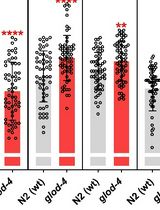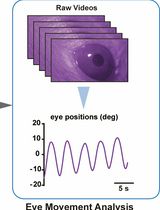- EN - English
- CN - 中文
Behavioral Assays to Study Oxygen and Carbon Dioxide Sensing in Caenorhabditis elegans
研究秀丽隐杆线虫的氧气和二氧化碳传感的行为分析实验
发布: 2018年01月05日第8卷第1期 DOI: 10.21769/BioProtoc.2679 浏览次数: 6898
评审: Khyati Hitesh ShahAnonymous reviewer(s)
Abstract
Animals use behavioral strategies to seek optimal environments. Population behavioral assays provide a robust means to determine the effect of genetic perturbations on the ability of animals to sense and respond to changes in the environment. Here, we describe a C. elegans population behavioral assay used to measure locomotory responses to changes in environmental oxygen (O2) and carbon dioxide (CO2) concentrations. These behavioral assays are high-throughput and enable examination of genetic, neuronal and circuit function.
Keywords: C. elegans (秀丽隐杆线虫)Background
Oxygen concentration provides C. elegans with information regarding environmental conditions. In laboratory conditions, when presented with an O2 gradient, C. elegans migrate towards intermediate concentrations (2%-12%) (Gray et al., 2004). Low levels of O2 may indicate the presence of bacteria (food) while high O2 levels may imply that the worms are close to the surface of its environmental substrate. Therefore, C. elegans responds in an exquisitely sensitive manner to changes in O2 concentration to enable navigation to optimal environments conducive to survival and propagation of offspring (Gray et al., 2004; Chang et al., 2006; Zimmer et al., 2009). Similarly, worms present a strong behavioral response to changes in CO2. Well-fed animals avoid CO2 while starved animals are attracted to CO2 (Hallem and Sternberg, 2008). This change in response may provide an evolutionary advantage to find food, as the bacterial food source releases CO2. Furthermore, pathogens generate CO2, which possibly indicates why well-fed worms avoid CO2. Specific neurons regulate gas sensing responses in C. elegans including the head neurons URXL/R, BAGL/R, AQR and the PQR neuron located in the tail (Hallem and Sternberg, 2008; Zimmer et al., 2009; Bretscher et al., 2011). The main regulators of O2 sensing are the URX and BAG neurons, which sense upshifts and downshifts of oxygen respectively. Regarding changes in CO2 levels, the BAG neurons are the principal sensors.
Materials and Reagents
- Worm pick made with platinum wire (Tritech Research, catalog number: PT-9901 )
- Filter paper (110 mm diameter) (GE Healthcare, Whatman, catalog number: 1001-110 )
- Petri dish 140 mm diameter (VWR, catalog number: 391-1500 )
- 90 mm Petri dishes (Techno Plas, catalog number: S9014UV20 )
- C. elegans strains
The following protocol applies to strains derived from wild type animals (N2, Bristol strain). Suggested controls (available from the Caenorhabditis Genetics Center (CGC)):- N2 (wild-type): positive control
- gcy-31(ok296): unable to respond to downshifts of O2 levels
- gcy-35(ok769): unable to respond to upshifts of O2 levels
- gcy-9(n4470): unable to respond to changes in CO2 concentration
- tax-4(p678): deficient in O2 and CO2 sensing
- N2 (wild-type): positive control
- Copper(II) chloride dihydrate (CuCl2·2H2O) (Sigma-Aldrich, catalog number: 221783-100G )
- NGM maintenance plates seeded with OP50 E. coli (see Recipes)
- KPO4 buffer (1 M, see Recipes)
- Potassium phosphate monobasic (KH2PO4) (Sigma-Aldrich, catalog number: P0662-500G )
- Potassium phosphate dibasic (K2HPO4) (Sigma-Aldrich, catalog number: 3786-500G )
- Potassium phosphate monobasic (KH2PO4) (Sigma-Aldrich, catalog number: P0662-500G )
- Assay NGM plates (see Recipes)
- Sodium chloride (NaCl) (Sigma-Aldrich, catalog number: S7653-250G )
- Agar (SERVA high-gel strength agar) (SERVA Electrophoresis, catalog number: 11396.03 )
- Cholesterol (Sigma-Aldrich, catalog number: C8667-25G )
- Calcium chloride (CaCl2) (Merck, catalog number: 1.02382.0500 )
- KPO4 buffer (1 M)
- Sodium chloride (NaCl) (Sigma-Aldrich, catalog number: S7653-250G )
- Starvation plates (see Recipes)
Equipment
- Computer compatible with the software
Intel core i7, 32GB RAM, Windows 7, 64 bit. Needs one additional gigabit Ethernet card for connecting the GigE camera (Figure 1) - Camera
We use a 4-megapixel CCD camera (JAI, model: BM-500GE ), 35 mm objective: QIOPTIQ MEVIS 3516. Extension rings: PENT EXTENSION RING 1 (1 mm C-Mount) (Figure 1)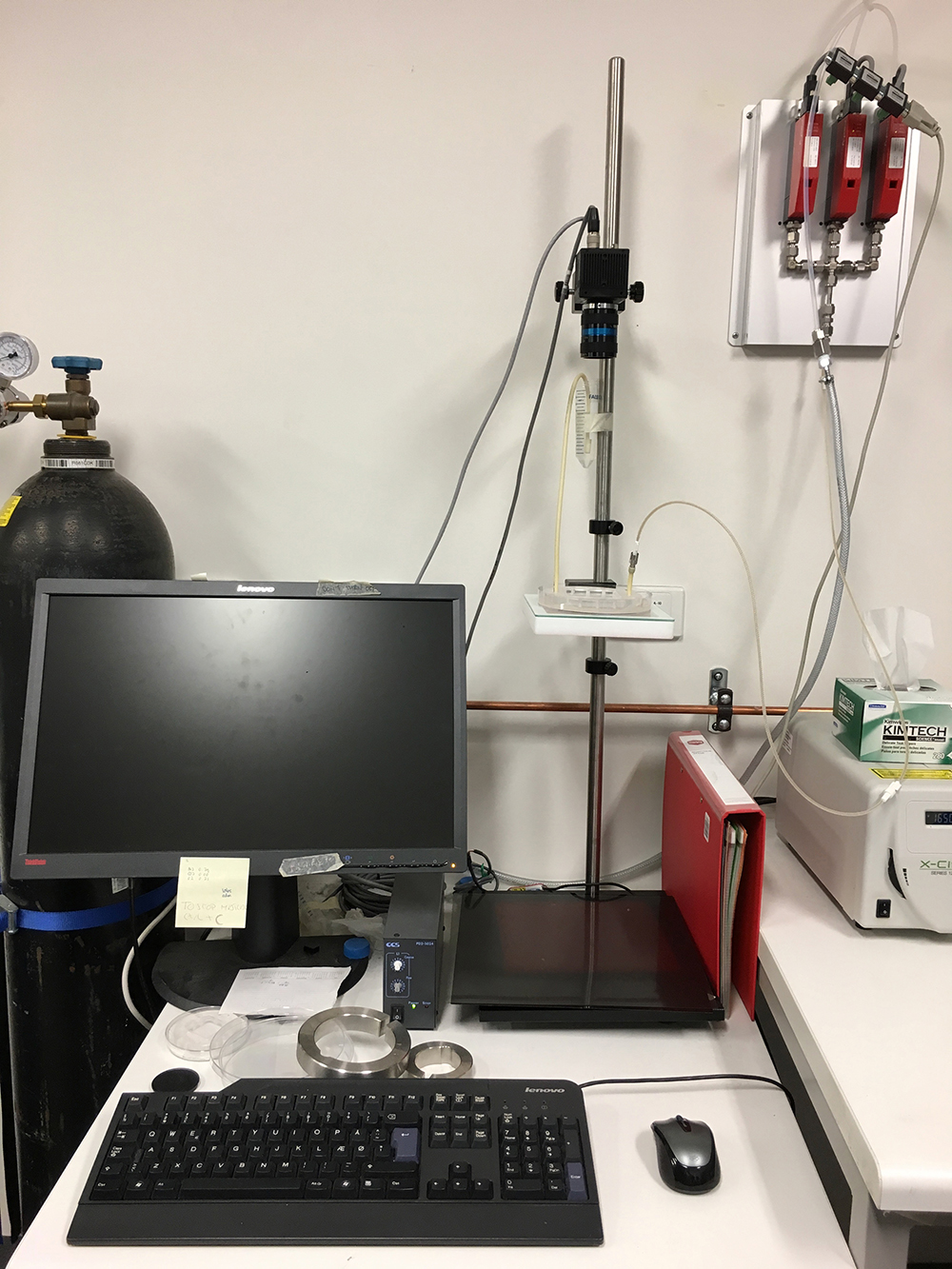
Figure 1. Computer and camera setup - Flow controllers
Vögtlin Instruments, CO2: GSC-A9TA-BB21 50 mln/min, N2: GSC-A9TA-BB22 200 mln/min, O2: GSC-A9TA-BB21 50 mln/min (Figure 2)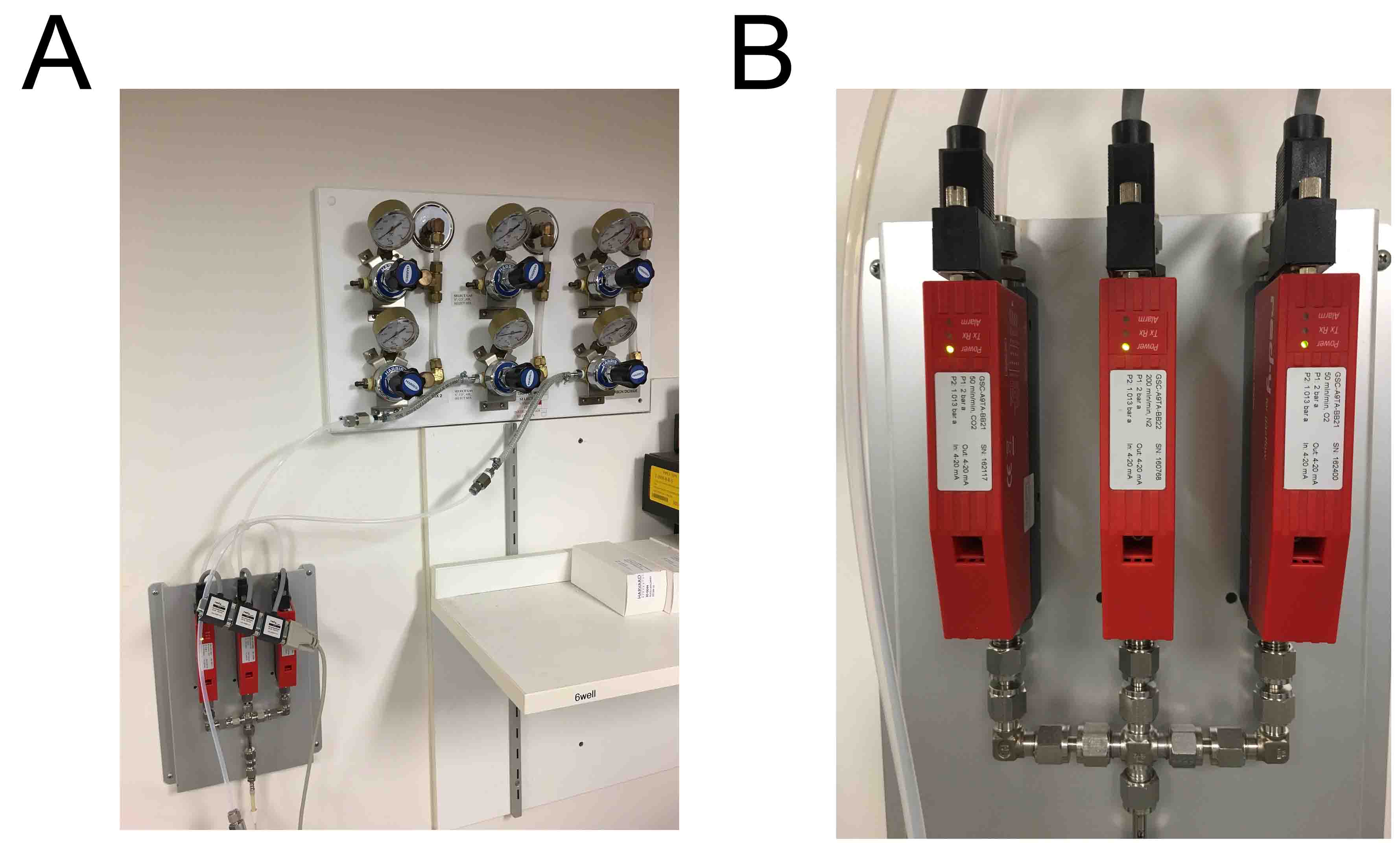
Figure 2. Gas and flow controller setup. A. Overview of mains gas supply connected to the flow controller. B. Close-up of the flow controller. - LED illumination (CCS, catalog number: TH-211/200RD ), cable (CCS, catalog number: FCB-1 ), power supply (CCS, catalog number: PD2-5024 )
- Individual gas bottles for O2, CO2 and N2
Note: Alternatively, premixed bottles may be used, depending on the flow controllers that are used. Nevertheless, we recommend individual gas bottles as they provide flexibility on the gas parameters that can be tested. - Assay chamber: custom-made transparent Plexiglas device with a flow arena of 60 x 60 x 0.7 mm (Figure 3)
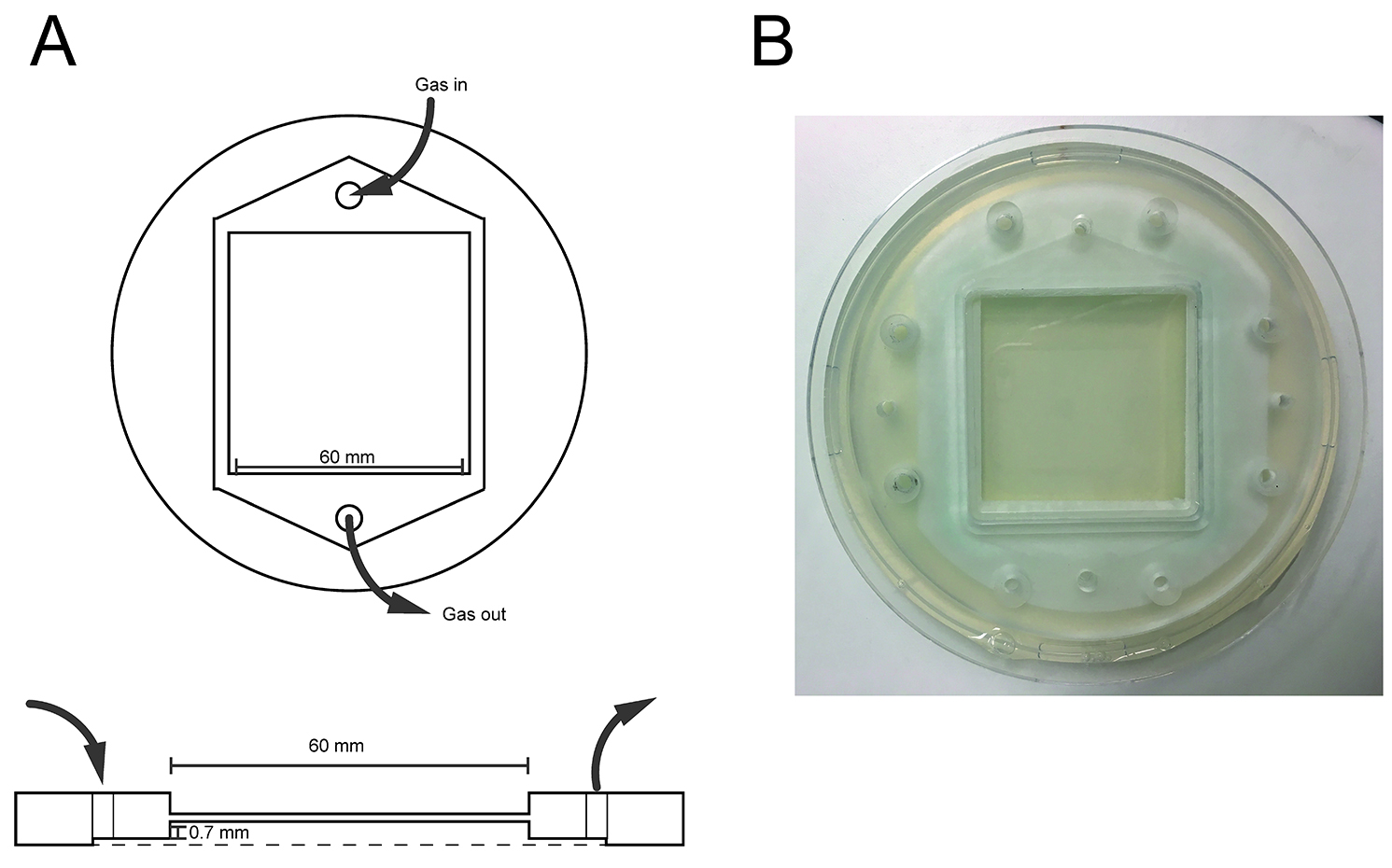
Figure 3. Custom-designed assay chamber. A. Top diagram: view from the top. Bottom diagram: lateral view. Note that the diagram is not scaled. B. Photograph of the assay chamber taken from above. - Autoclave
- Dryer (Binder, catalog number: 9010-0102 )
- 500 ml autoclaved bottle
Software
- Labview (to program and regulate the flow controllers)
- MATLAB (R13) (MathWorks) and Image Acquisition and Image Processing Toolbox (Figure 4)
- Parallel WormTracker (freely available: https://sourceforge.net/projects/wormtracker/)
- Streampix software (Norpix)
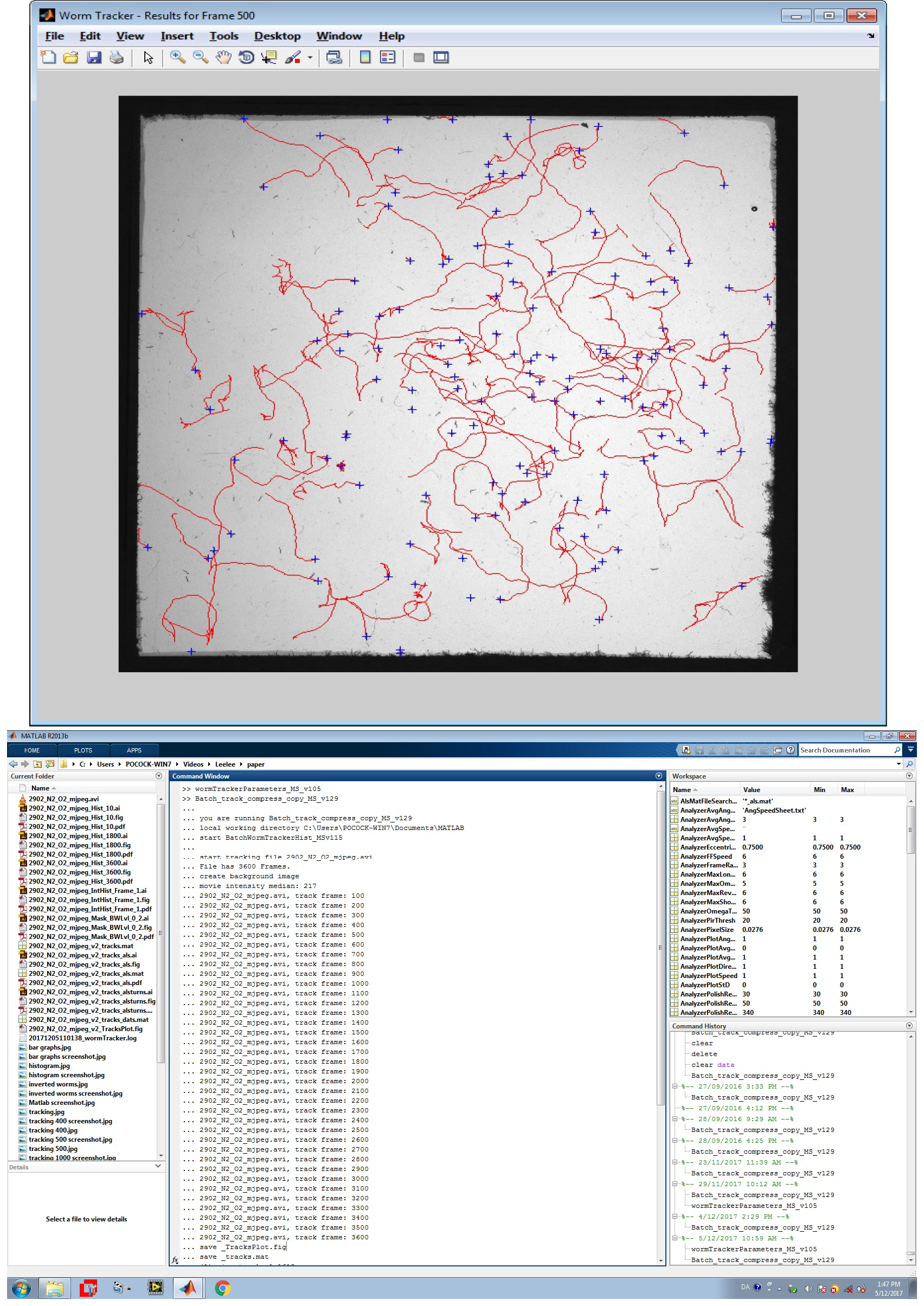
Figure 4. Screenshots of WormTracker analysis. A. Tracks of individual worms (red lines) detected by the software. B. MATLAB analysis software screen showing tracking frames.
Procedure
文章信息
版权信息
© 2018 The Authors; exclusive licensee Bio-protocol LLC.
如何引用
Rojo Romanos, T., Ng, L., Zimmer, M. and Pocock, R. (2018). Behavioral Assays to Study Oxygen and Carbon Dioxide Sensing in Caenorhabditis elegans. Bio-protocol 8(1): e2679. DOI: 10.21769/BioProtoc.2679.
分类
神经科学 > 行为神经科学 > 感觉运动反应
神经科学 > 感觉和运动系统 > 动物模型
您对这篇实验方法有问题吗?
在此处发布您的问题,我们将邀请本文作者来回答。同时,我们会将您的问题发布到Bio-protocol Exchange,以便寻求社区成员的帮助。
Share
Bluesky
X
Copy link











